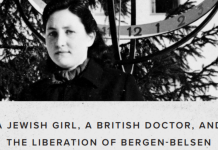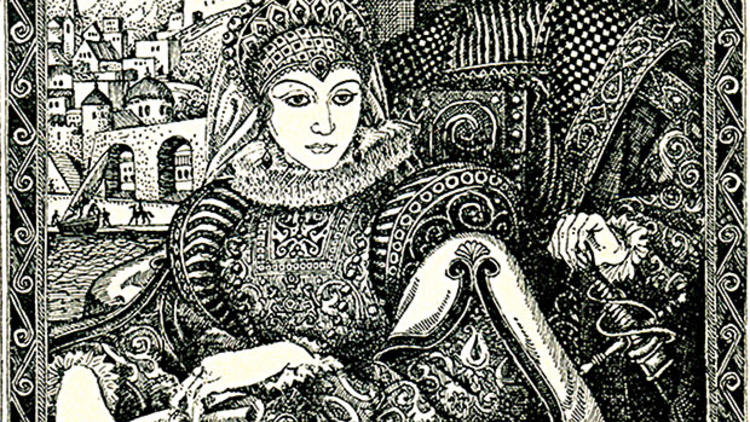Far too many people unfortunately believe Zionism to be a movement created in the 19th century, largely in Europe, by purely secular Jews who rode the wave of nationalism spreading across the globe at that time. However, Zionism is not a modern concept, but rather an idea and a precept woven into our people’s history, forcefully emanating from all our major texts and testified to by daily and life-cycle events.
By understanding Zionism only from the viewpoint of modern political Zionism, one might falsely believe it to be a modern movement that contradicts Jewish thought and urges. A knowledge of Sephardi history puts paid to this misconception.
Throughout Sephardi history, some of the most prominent personalities were not only theoretical but also very practical Zionists, laying the groundwork for what would become the most remarkable and ahistorical return of an indigenous people to their ancestral homeland, 2,000 years after their sovereignty was violently extinguished by conquerors and kept so by colonizers and occupiers.
Much of the poetry of Rabbi Yehuda HaLevi, a Spanish Jewish physician, poet and philosopher, born in Toledo in 1085, reflected his yearning and love for Zion. Arguably his most famous poem today, “My Heart is in the East” illustrates that although he occupied honored positions both within the Jewish and wider society, he felt compelled to abandon the land of his birth for his ancestral homeland.
At the end of his life he traveled to the Holy Land to settle and fulfill his dream. However, according to tradition he was murdered by an Arab as he knelt at the Wailing Wall in Jerusalem soon after he arrived.
In his most famous religious treatise, the Kuzari, Rabbi HaLevi explains that only the Land of Israel is the homeland of the Jewish people and that they must become physically connected to it once again.
A century later, Rabbi Moses ben Nachman, otherwise known as the Ramban or Nachmanides, scolded one of his predecessors, Rabbi Moses ben Maimon, otherwise known as the Rambam or Maimonides, the first to elucidate the 613 mitzvot (commandments), for leaving out the commandment to take possession of and settle the Land of Israel. In his commentary Hasagot HaRamban on the Rambam’s definitive Sefer HaMitzvot, the Ramban states that “we have been commanded to take possession of the land and dwell in it. If so, it is a positive precept for [all] generations, binding upon every individual, even during the period of the exile, as is clear from many places in the Talmud.”
In fact, many rabbis and commentators have argued that the Rambam did in fact consider the mitzvah of settling the Land of Israel and taking possession of it, but did not include it because it was a general mitzvah from which many other mitzvot were derived.
The Ramban, like HaLevi and many others, was not just committed to the religious theory of settling the land but himself fulfilled the precept he laid out for others. In 1267, Ramban made aliyah to Jerusalem, where he established a synagogue in the Old City that exists until the present day, known as the Ramban Synagogue. His re-establishment of Jewish communal life in Jerusalem (which had been interrupted by Crusader repression) is notable in that it marked the beginning of almost 700 consecutive Jewish years in Jerusalem until the 1948 War of Independence when the Jews of the Old City were expelled and most of the synagogues demolished.
During these last few years of his life the Ramban was in regular correspondence with those he had left behind in Spain, whom he encouraged to develop a closer connection with the Land of Israel and even settle there. Many took his advice and many famous mass aliyottook place during this period. Two centuries later, the unprecedented Jewish existence in Spain would come to a devastating and violent end with the 1492 Edict of Expulsion and the mass forced conversions of Jews on the Iberian Peninsula.
However, some, like Rabbi Isaac Abravanel, saw in this tragedy an impetus for a strengthening of practical Zionism, just as some of his predecessors would in later traumas suffered by the Jewish People.
Rabbi Abravanel wrote: “And in the year 5252 [1492], the Eternal roused the spirit of the kings of Spain to expel from their land all of the Jews, some three hundred thousand souls, in such a manner that all of them would leave … and all of them would pass before the land of Israel, not only the Jews but also the conversos [a Jewish convert to Roman Catholicism] … and in this way they would gather upon the holy soil.”
The woman who defied kings
Perhaps one of the most remarkable Zionist movements before the modern era was that led by the Sephardi heroine Dona Gracia Mendes Nasi.
Born in 1510 in Lisbon and known as Beatrice de Luna during her early years in a family of Aragonese Anousim (Jews who had been forcibly converted to Catholicism but remained Jews in secret), Dona Gracia was 300 years ahead of Theodor Herzl in conceiving a movement whereby Jews would once again take possession of their homeland.
During the height of the Ottoman Empire, Dona Gracia used her powerful influence to gain autonomy for the Jews in parts of the Land of Israel. Encouraged by the Sultan, she started building Tiberias, in an effort to renew the ancient city of the Sanhedrin and make it a home for Jews. Thus, Dona Gracia paved the way for a return to Zion.
According to Andree Aelion Brooks’s The Woman Who Defied Kings: the Life and Times of Dona Gracia Nasi, “In Tiberius, the newcomers were soon taking over abandoned structures, renovating deserted houses, restoring gaping roofs, clearing the rubble and quarreling in typical Jewish fashion. By 1564 the revival was sufficiently far along that yet another traveler recalled that the scent from the date palm, orange and pine trees was so overpowering that it was almost suffocating. Yet another talked effusively of a wilderness turned into a Garden of Eden. Almost all of the residents, noted one of these travelers, were formerconversos from Spain and Portugal.”
Although the Tiberius community went into decline after Dona Gracia Nasi passed away, there are some Jews living in Israel today who can trace their residency in the Holy Land back to this aliyah, known as the Old Yishuv.
Dona Gracia was also known for her benevolent funding of the growing community of Sephardi exiles in Tzfat. These returnees experienced a material and spiritual flowering such as the Jewish community in Israel had not enjoyed since the period of the Mishnah. This community gave rise to some of the most important intellectual achievements of Jewish history—of which the most enduring are the Shulhan Aruch and Beit Yosef of Rabbi Joseph Karo, which today remain two of the pillars of the Jewish legal tradition; and the kabbalistic teachings of Rabbi Isaac Luria, which revolutionized Jewish mysticism.
Tzfat’s intellectual renaissance began in 1524 with the arrival of Rabbi Jacob Berab, one of the leading Spanish scholars of his generation. Rabbi Berab, like almost all the great rabbis in Tzfat at the time, was not just interested in spiritual pursuits but also to take practical action towards regaining Jewish sovereignty in Israel. He sought to reinstate the ancient Jewish legislative-judicial body, the Sanhedrin, which represented the most concrete expression of Jewish sovereignty in the Land of Israel for many generations.
The Jewish mysticism which sprouted primarily among the Sephardi community in Israel also inspired Rabbi Yehuda Solomon Alkalai, who was born in the Sephardi community of Sarajevo in 1798 but studied in Israel.
Rabbi Alkalai had the idea, echoed later in the endeavors of Theodor Herzl, to get various nations to give the Jews a homeland, just as they had, at about that time, assisted the Greeks and others. In Raglei Hamevaser he wrote, “The salvation of Israel lies in addressing to the kings of the earth a general request for the welfare of our nation and our holy cities, and for our return in repentance to the house of our mother … our salvation will come rapidly from the kings of the earth.”
He also called for the establishment of a bank to finance the emigration of the Jews and for settlement societies and other practical steps. In 1843, he wrote the treatise Minhat Yehuda, which called for the adoption of Hebrew as a national language, the purchase of land in Palestine, development of agriculture to form the basis for absorption of new immigrants, and encouragement of a sovereign-based national unity.
At the age of 73, Rabbi Yehuda Alkalai traveled to Israel to determine the possibilities for settlement there—an arduous journey at his age. More remarkably, he came to live in the Land of Israel with his wife in 1874, at the age of 76.
Herzl’s paternal grandfather, Simon Loeb Herzl, reportedly attended Alkalai’s synagogue in Semlin frequently visited with the rabbi. Loeb Herzl “had his hands on” one of the first copies of Alkalai’s 1857 work prescribing the “return of the Jews to the Holy Land and renewed glory of Jerusalem.” Contemporary scholars conclude that Herzl’s own implementation of Zionism was undoubtedly influenced by that relationship.
A Zionist before the word was invented
Around the same time, another Sephardi Jew was laying the practical foundations for Jewish settlement in Israel, and in Jerusalem in particular.
Born in 1784 in the Italian city of Livorno (Leghorn) but raised in England, Sir Moses Montefiore was so struck by his visit to Jerusalem in 1827 that he became devoted to the city and its inhabitants for the rest of his life. He later used his position as president of the Board of Deputies of British Jews to carry on a notable correspondence with Charles Henry Churchill, the British consul in Damascus, concerning the resettlement of Jews in Israel.
His acts of philanthropy in building the Jewish settlement in the Holy Land are numerous. As the designated executor of Judah Touro’s will, he decided to use the estate to fund projects of Jewish residential settlement in the Land of Israel. He purchased an orchard in 1855 on the outskirts of Jaffa to offer agricultural training to Jews. On the occasion of his ninetieth birthday in 1874, he established a fund that was instrumental in facilitating Hovevei Zion settlements in Israel.
He funded the very first Jewish neighborhood built outside the walls of the Old City of Jerusalem, known as Mishkenot Sha’ananim. He also financed several agricultural colonies, a textile factory, and a printing press. Undoubtedly, however, his best-known project is the Montefiore Windmill, built in Jerusalem’s Yemin Moshe neighborhood to provide cheap flour to the poor. It operated for about 19 years and is today a beloved landmark.
Describing his illustrious ancestor, noted author Simon Sebag Montefiore called Moses Montefiore “a Zionist before the word was invented,” who “believed in the sacred idea of Jewish return as a religious Jew’s duty, and in Jewish statehood.”
Paving the way for Herzl
These are just some of the eminent Sephardi Jews without whom there would perhaps be no modern State of Israel, or at least not as we know it. Zionism was not a word they knew, but rather a spirit they were deeply dedicated to, spiritually, but most importantly, physically and practically. They saw absolutely no contradiction between yearning for return in daily prayer and dedicating one’s life to actualizing this dream. In fact, the opposite was true.
For Sephardim, there is no separation between the religious-based concept of Zion and the practical ideas of sovereignty, self-determination and statehood. Israel had been a Jewish state before, and the promise of its return to this status was not to be confined to the prayer book and synagogue. Each of these men and women, and many others, laid the foundations for what was to come in the 20th century. Without Alkalai, perhaps Herzl might not have been inspired by the idea of a Jewish state. If not for the kabbalistic community of Tzfat, Alkalai might not have attained his views on a return to Jewish sovereignty. Without Gracia’s largesse, perhaps the community of Tzfat might not have been able to sustain itself, and so on.
Of course, there are many non-Sephardim who played a vital role in the development and continuity of Zionism from the fall of the Jewish Commonwealth in the 1st century, but these Sephardi luminaries need to be recognized as pivotal characters in the restoration of sovereignty in our ancestral homeland.
Ashley Perry (Perez) is an international strategic consultant, content manager and creator, and public-relations adviser to companies, organizations and individuals in a variety of fields and arenas at the highest levels globally.


























